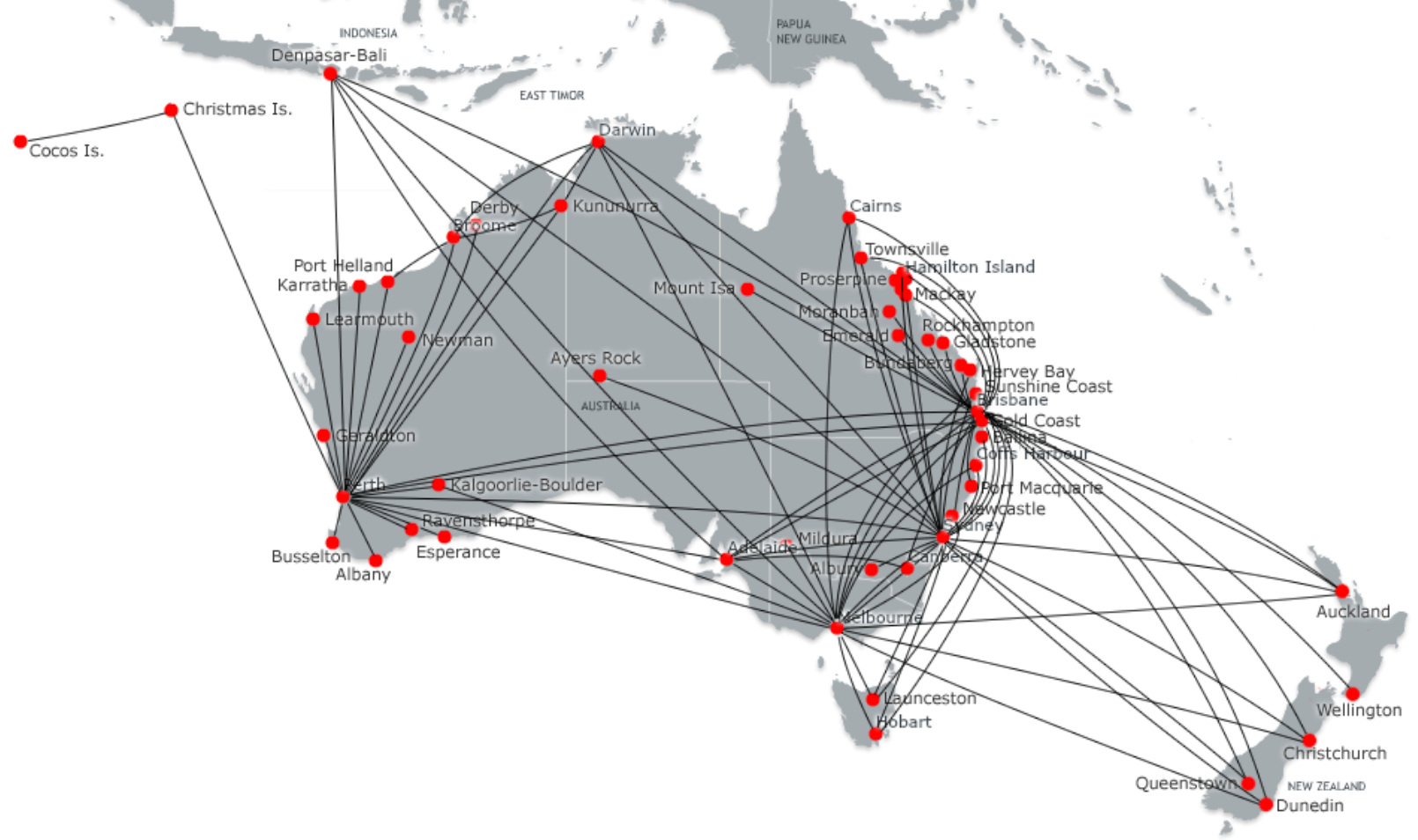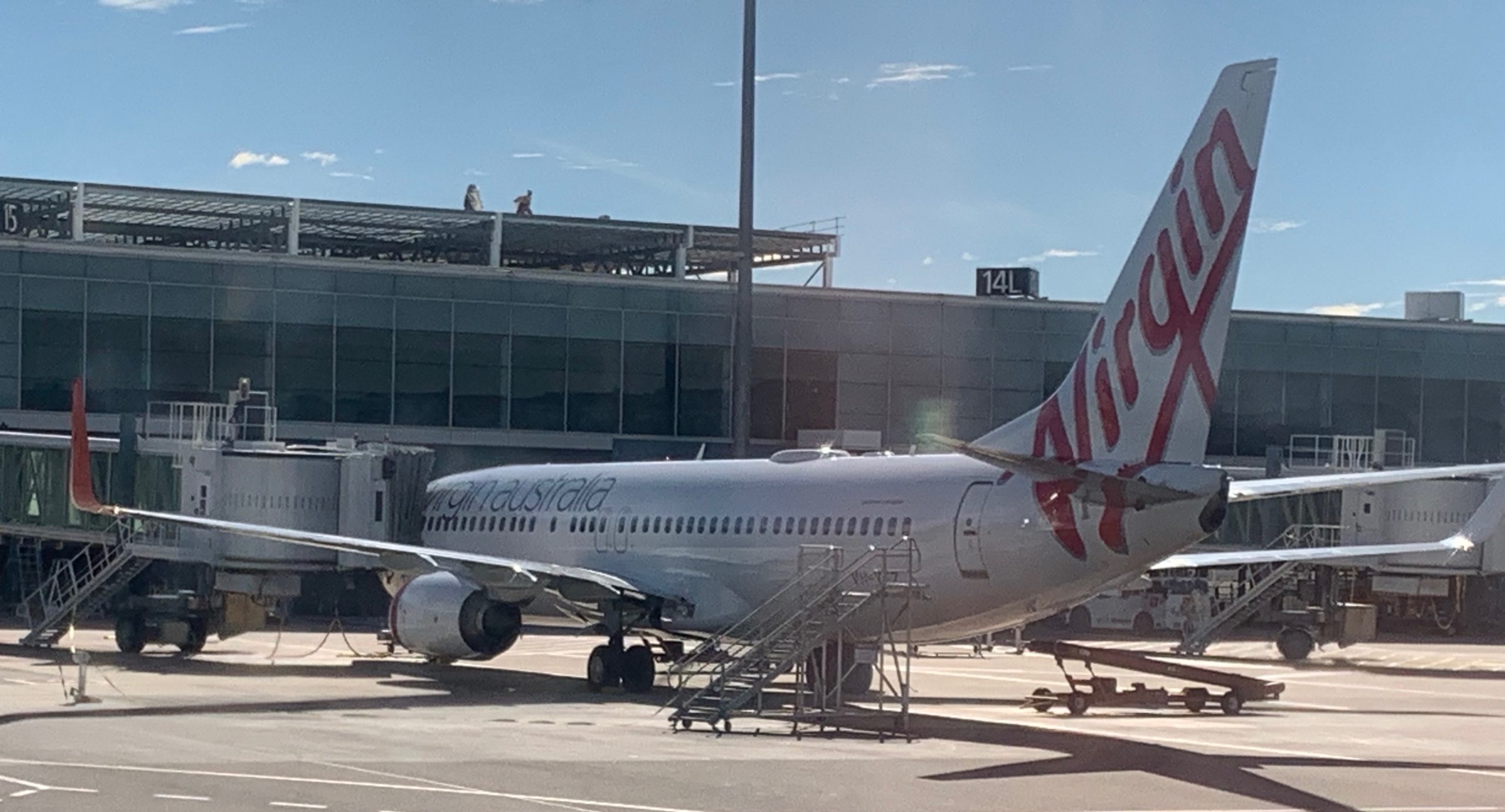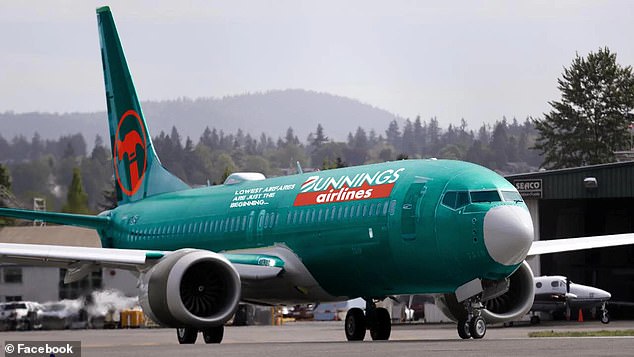Once upon a time in 2000, Virgin entered the Australian airline market as a low cost carrier challenger. Months after its arrival, it found itself in a unique position as one of the country’s two main airlines (Ansett) collapsed in the wake of 11 September 2001. Qantas expanded to fill the vacuum left by Ansett. Virgin Blue nipped at their heels for over a decade. Qantas even started a new discount airline Jetstar in 2003, to take on Virgin in the low cost market.
In 2010, Virgin Blue became Virgin Australia, repositioning itself as a full service carrier and taking Qantas head on domestically and on a small number of international sectors.

Fast forward to 2020, the aggressive expansion, debt funded aeroplane purchases and financially unsuccessful international routes have weakened Virgin Australia. The COVID19 related grounding of the airline’s planes reduced their cash flow to just weeks.
An emotional Virgin Australia staff begged for Australia’s second airline to be saved as the Board placed the company into voluntary administration with a $AUS7 ($US4.6) billion debt.
The Australian government has indicated that just like it did with Ansett, there will be no government rescue. Political officials have indicated that the market will need to operate in this situation, even after, Virgin Australia approached the government for help on eight occasions before going into liquidation. The government is not interested in nationalising the carrier or bailing it out or taking a stake in them.
To complicate matters, Virgin’s shareholders are unable to financially rescue the airline:
- Nanshan Group owners of Qingdao Airlines with current political sensitivities, the Australian government would not allow Chinese ownership increases
- HNA Group, the deeply indebted owners of Hainan Airlines
- Singapore Airlines who have just been bailed out by the Singapore government
- Etihad Airways, who themselves may not make it through this crisis intact
- Sir Richard Branson’s Virgin Group owns just 10% and is struggling with the COVID19 impact on its Virgin Atlantic subsidiary
Administrators from Deloitte Australia were appointed this month to restructure and sell Virgin Australia Holdings Ltd’. Deloitte halted payments to bondholders and appointed Morgan Stanley alongside Houlihan Lokey to run the sale process. The company’s debts are:
- Twenty-six secured lenders who are owed approximately $2.3 billion
- Unsecured bondholders owed about $2 billion
- Fifty aircraft lessors owed about $1.9 billion
- 9,000+ employees owed $451 million
- Over 1,000 trade creditors owed $167 million
- Eighty-one landlords who are owed $71 million
Deloitte has advised creditors that it plans to hold a second creditors meeting on 22nd of August. This was not soon enough for Perth Airport which resorted to blocking planes with ground equipment including a bulldozer to try and get the airline to pay its debt!
Virgin Australia has 144 737-800s, A330s, 777s and ATR72s. About half of them are under lease.

There are reportedly twenty interested parties in Virgin Australia. These apparently include:
- Sydney private equity firm BGH Capital. It has the backing of Australia’s largest pension fund, AustralianSuper and links to Singapore’s Temasek Fund which owns Singapore Airlines. This is a prospect that would be making Qantas nervous
-
Retail corporation, Wesfarmers who own the highly successful discount DIY hardware chain Bunnings. They have been interested in Virgin for a long time. Facebook users have mocked up a Bunnings Airlines plane for consideration!
-

Source: Facebook
-
-
Australian mining tycoon Andrew Forrest
-
Canadian asset manager Brookfield with Australian investment bank Macquarie Bank.
- US airline investor Indigo Partners which owns Volaris and Spirit
- US private equity firm Bain Capital
There are three options for a future Virgin Australia:
- Virgin Australia is returned to its low cost carrier status
- Virgin Australia continues as a “full service airline
- they collapse leaving the Australian airline industry as a Qantas controlled monopoly
The investment to reposition the Virgin Australia Group to compete across all sectors of the international and domestic market has been extremely large. This entry into Voluntary Administration presents an opportunity, to purchase the value of that investment at a significant discount.
The company has been undertaking a strategic review under its new CEO and had yet to fully implement the changes that would have come from that review. This review would have provided (pre COVID19) the blueprint for profitability.
The Velocity Frequent Flyer program is wholly owned by Virgin Australia (after a buy back last year) and operates at a profit.
A purchaser of Virgin Australia would have the opportunity to operate a company with a strong brand presence in the Australian and New Zealand markets, good infrastructure, loyal staff, high customer loyalty reflected in their frequent flyer programs and lower debt. I we will see a “leaner, stronger, fitter Virgin Australia in the next few years.
The airline has promised no major changes, at this stage. It is currently running a limited domestic services supported by government grants. The Frequent flyer scheme has frozen redemptions. There are no plans to make staff redundant.
Virus Information
Related Posts
- CoronaVirus- Health Info Country by Country
- Should you travel? No.
- Can you travel? No. Implications and Advice
- Dodging National Closures – Last Plane to Bangkok
- Travel -after COVID19


Leave a Reply